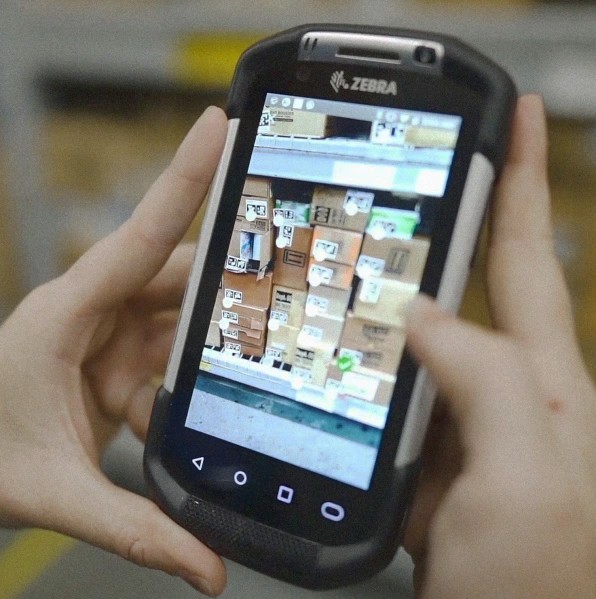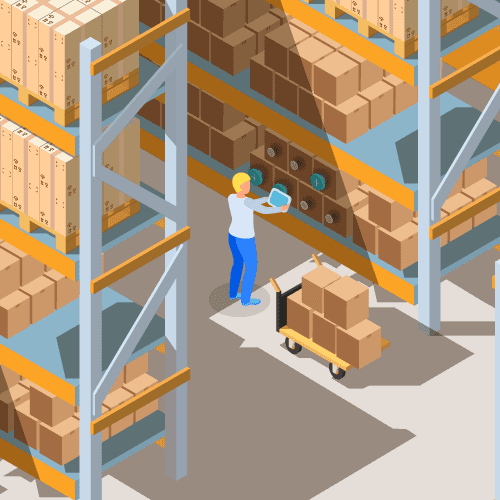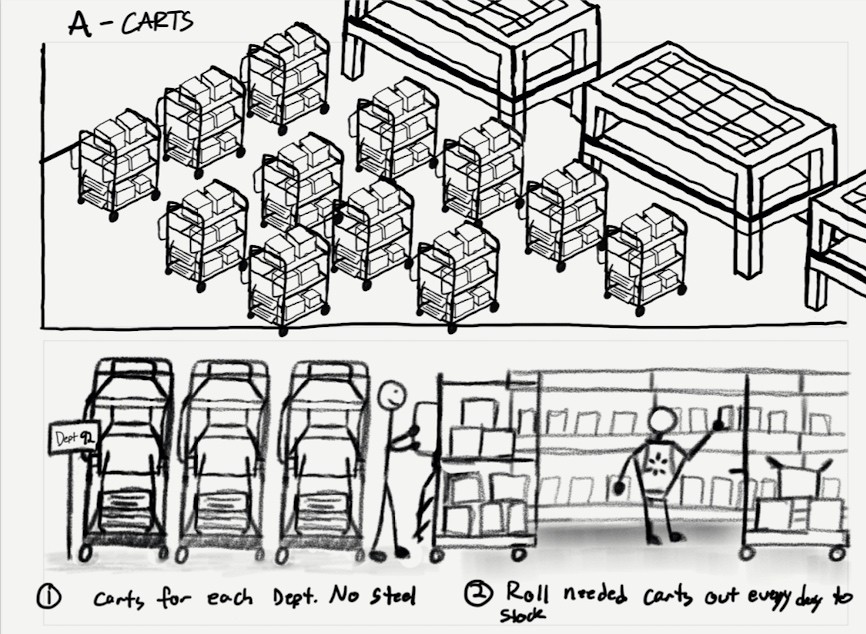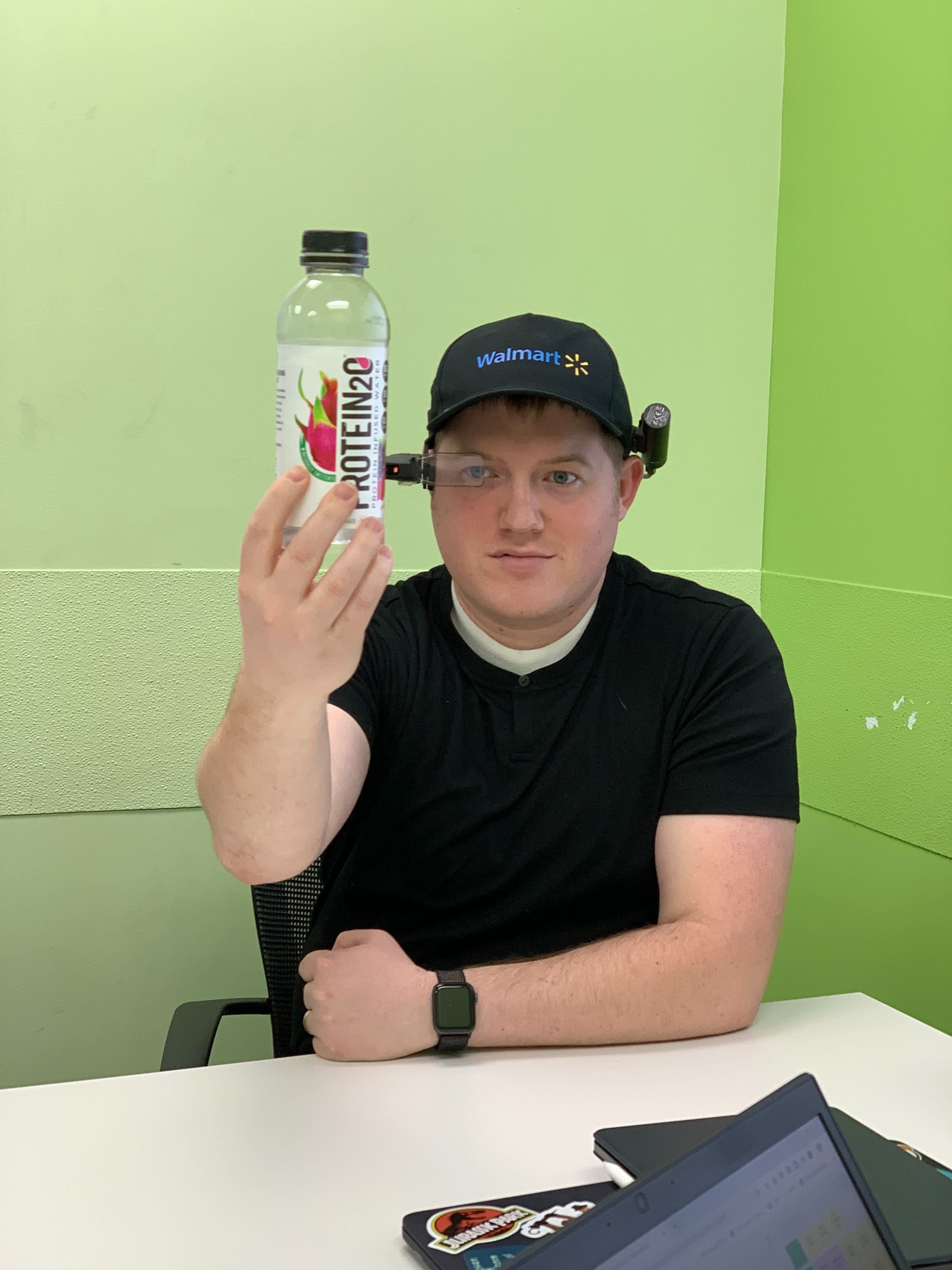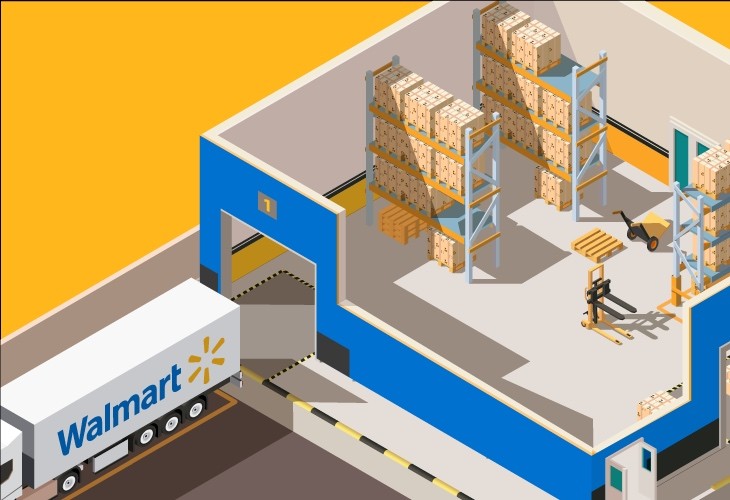
Backroom Augmented Reality
Between 2019 - 2020 I worked with a team of PM's and Engineers to evaluate and improve the process for keeping track of inventory counts in Walmart backrooms. Our research led us to build an augmented reality experience that helps Walmart Associates complete the process 70% faster.
Discovery
Our team visited several stores and worked several shifts to grow our understanding of the problem area. Along the way, we interviewed many Store Associates and Home Office subject matter experts.
Our interviews and surveys indicated that the current system wasn't usable. We also discovered that the average time to complete the task was nearly twice the man-hours a store had each week.
Interviews
While visiting and working in stores, we interviewed many store associates to better understand the inventory process. These interviews helped us uncover critical insights, including why the system was mistrusted and largely ignored when making decisions.
Service Design
I created a service and journey map from these experiences and interviews, which helped us see the big picture and identify the largest opportunities.
SUS Scoring
We gave 15 store associates a survey and used the System Usability Score (SUS) rating to get a baseline measure of the effectiveness, efficiency, and satisfaction rating of the current system.
The system was rated as a 48, well below the average 68 score (on a scale of 0-100) that indicates an "OK" design.
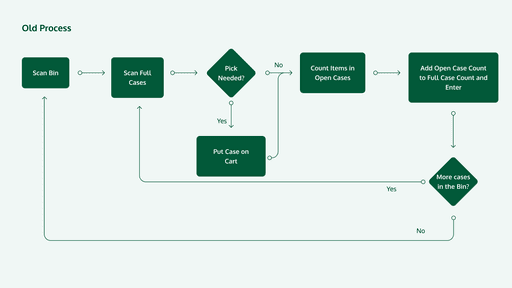
Define
Using our service journey map, we identified and prioritized the most important problems to solve. We prioritized a list of ~15 major problems based on level of impact, downstream effects (multiple problems could likely be solved by solving a single problem), and how quickly we thought a problem could be solved.
We prioritized shortening a lengthy process, and building trust that the system was giving accurate information.
Trust
Associates didn't trust the system to give them accurate instructions, leading to inaccurate results and lost time.
Problem Statement
As a Walmart Associate working in the backroom, I need a way to quickly record inventory counts. I also need to be able to trust that the system is giving me accurate results.
Design
We focused our design efforts in 3 key areas: Backroom Environment, Technology, and User Interface.
Environment
Technology
User Interface
Deliver
My primary deliverable was a Sketch document containing designs for engineering. I also built an Invasion prototype which we presented to key stakeholders in the business. Below are a sample of final UI screens.
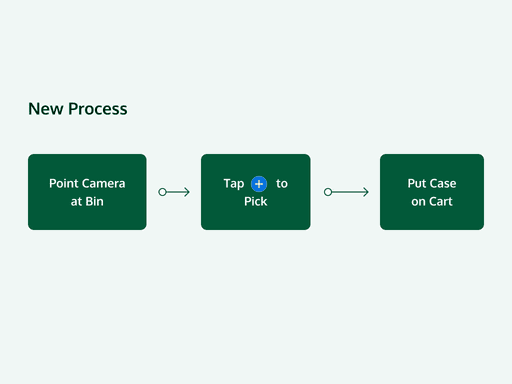
Results
Our solution cut the time to complete this process down by 70%. I left the company before being able to redo the SUS survey, but early analysis was promising. Associate's report that it's much easier to count inventory, and that they trust the system to give accurate instructions.
